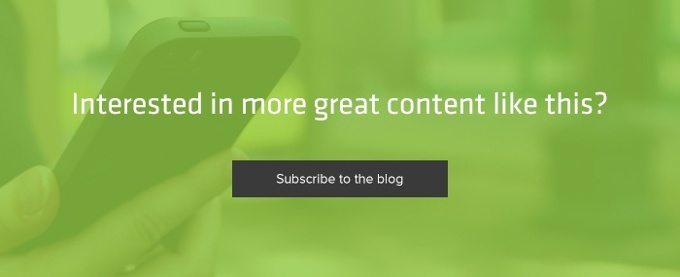Customer Journey Mapping Example: An Auto Claim
Customer Experience | Customer Communications | Customer Journey
The only way you’ll ever be able to identify and address customer experience (CX) gaps is by mapping out critical customer journeys to see what works and what doesn’t from the customer’s point of view. To do this, you need to take a close look at very specific customer/company interactions, starting with the ones that most directly impact your business objectives and/or potentially contribute to customer experience gaps that lead to customer attrition. 
Let’s take a look at a common example: filing an auto insurance claim.
Nearly every driver in the United States must carry auto insurance. And statistically, most drivers will have to file a claim against their auto insurance at some point in their lives. This means that filing a claim is a critical customer journey for all auto insurance companies. Therefore, insurers should absolutely map out that journey to identify any problems or gaps and fix them. If they don’t, they run the risk of losing customers and/or suffering negative word of mouth as a direct result of poor CX in such a well traveled customer journey.
The key to getting the most out of this exercise is to look at the experience from the customer’s point of view. It’s easy to slip into looking at it from the organization’s perspective, but that’s not what you need right now. You need to know how it feels to be your customer so you can identify points of frustration, friction and negative emotion as well as touchpoints with the potential to delight.
Put Yourself in the Customer’s Shoes
You’re a single mother of two young children. You work two jobs to make ends meet. You drive a ten-year-old minivan, but it’s paid off and it works; you take good care of it, and it has always taken care of you. On your way home late one rainy night from your second job, you hit a slick patch on the road and veer into a ditch. Luckily, you have only minor injuries and the kids were with their grandparents, but the minivan is badly damaged and isn’t drivable. You start to panic. You need your vehicle to get to work, and you can’t afford to miss a single day. What now?
As a representative of the insurance company, can you empathize with this customer? She’s frazzled and distressed. She can’t afford to take any time off work to deal with this situation. It will be a struggle for her to pay her deductible and/or rent a car while hers is being fixed or replaced. Moreover, she’s never filed an auto insurance claim before and doesn’t know where to start. But she has no choice – she has to do this. She needs a car, and she needs to get this taken care of ASAP. So she’s beginning the journey of filing a claim with your company already awash in negative emotions – anxiety, fear and uncertainty.
Back to the customer’s experience:
You make your police report, watch your vehicle get towed away, and call a friend to take you home. You’re exhausted and hurting, but you know time is of the essence to get the repairs started on your car. You have to work in the morning and won’t be able to deal with it then. It’s too late to call the insurance company, so you go to their web site. You spend several minutes clicking around, but everything on the site is about buying insurance or making a payment, not using it once you have it. Your frustration grows by the minute. You realize you’re going to have to take time off work in the morning to call your insurer, so you go to bed angry.
Right away, you see an obvious gap that needs to be fixed. Most of your competitors make “File a Claim” an extremely prominent call to action on the main pages of their web sites. Remember, serving and retaining existing customers should be just as important as acquiring them in the first place. In the world of omni- channel customer communications, you have to be available to your customers when they need you through any channel through which they want to communicate with you. Ideally, your customer communications management (CCM) should span print, telecomm, web and mobile capabilities.
channel customer communications, you have to be available to your customers when they need you through any channel through which they want to communicate with you. Ideally, your customer communications management (CCM) should span print, telecomm, web and mobile capabilities.
You wake up the next day, call your boss to let her know what’s going on, and then dial the toll-free number for your auto insurer. You get fed into an IVR (interactive voice recognition) phone menu system. After several minutes, many menus, and being forwarded three times to different departments, you get a claims rep on the phone. He tells you to go to the web site and fill out a claim form. You tell him there’s no claim form on the web site. He gives you the URL, and lo and behold, there it is. Nothing in the web site’s navigation would have led you there, though. You hold back obscenities and hang up the phone. You fill out the form and rush off to catch a bus to work, over an hour late.
You’ve uncovered two more gaps. First, make it faster and easier for your customers to connect to your claims reps, and then tell your reps to fill out the form for customers over the phone rather than send them to the web site to do it themselves. Once they’re on the phone with you, they just want to get it done. Again, put yourself in their shoes. What would you want to have happen if it were you?
Eventually, you are able to give a claims rep the address of the lot where the tow truck took your minivan, and they say they will assess it that day. In the mail, you receive a letter from the insurance company acknowledging your loss and telling you to fill out another form and send it back. You think you already filled out this form, but you’re not certain. Just in case, you fill it out and drop it in the mailbox as you run to catch the bus to your second job.
Another gap – what was that form in the mail? Did you make the customer do double the work? You certainly added to her anxiety level. Make sure your written communications are crystal clear, and make sure they are personalized to reflect that individual customer’s account information, specific circumstances, and previous interactions with your company. Otherwise, it will further frustrate the customer and possibly complicate or derail the ongoing transaction.

The Takeaway
This gives you an idea of how to examine a critical journey on a granular level from a realistic customer’s point of view. How many touchpoints did the organization have with this customer during just this one process? Could the process be streamlined? (Yes!) How well did the organization deliver on the “Three Es” of good CX – making it easy and effective to create positive emotions? (Not well.) How likely is this customer to renew her policy with the company? (Not very.) How likely is she to refer this insurer to her friends, family and acquaintances? (Not likely.)
Delivering poor CX in just this one critical journey can absolutely destroy this insurer’s customer loyalty and lifetime value. The good news is that the experience can be improved tremendously with a few strategic changes in the organization’s people, processes and technology that can help close the gaps that were revealed.







